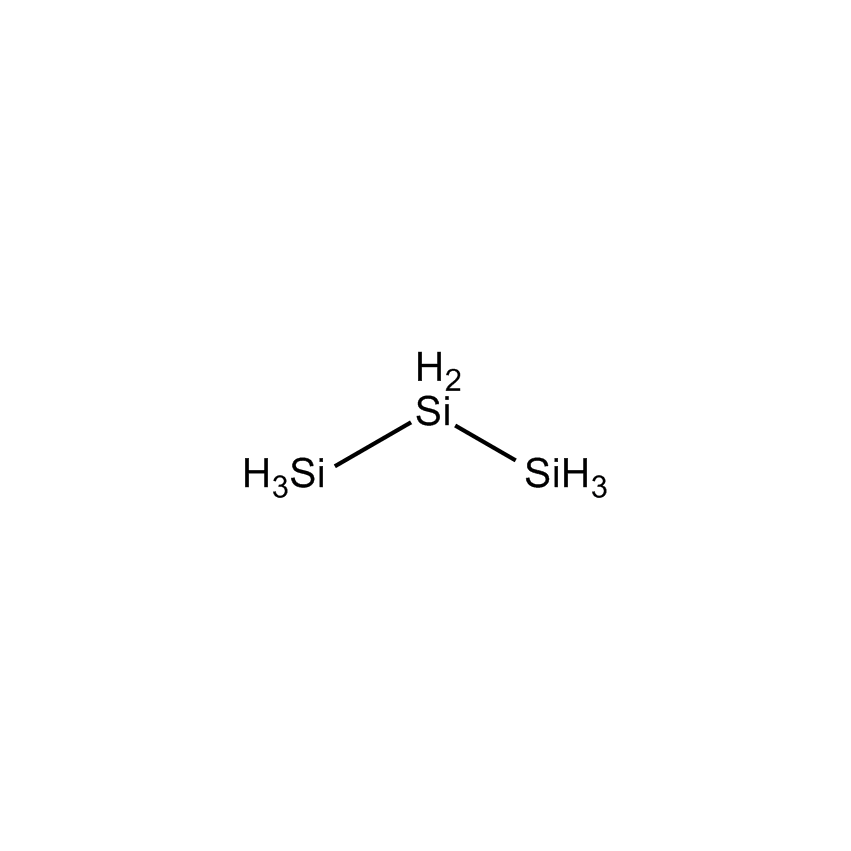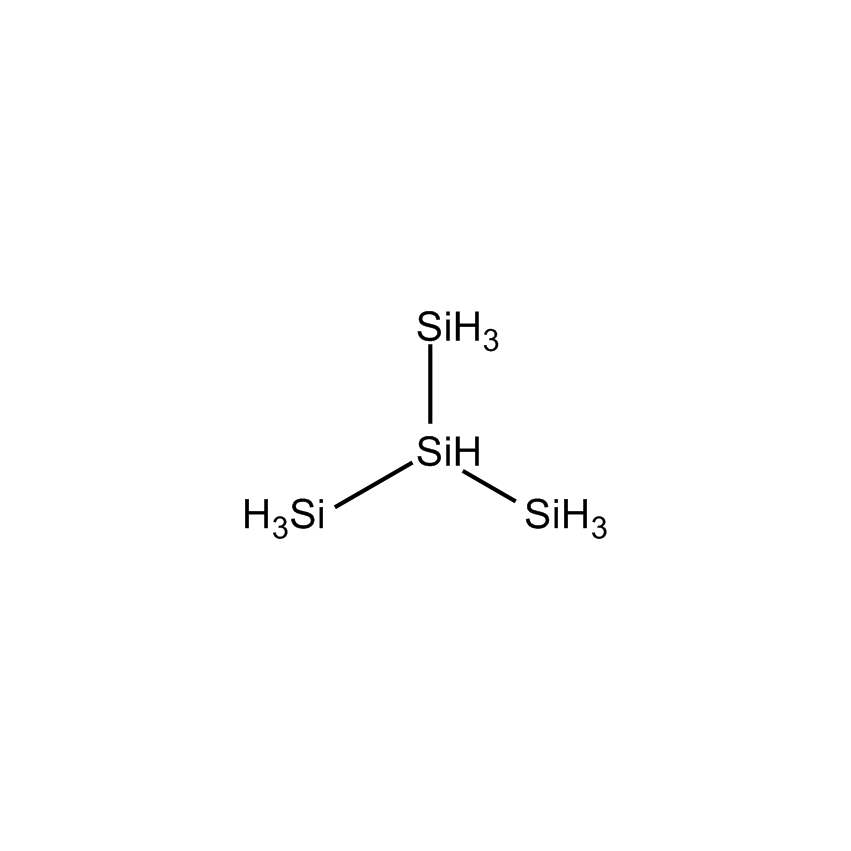Additional Properties
- HMIS 3-4-3-X
- Molecular Formula H8Si3
- Molecular Weight (g/mol) 92.32
- TSCA Yes (L)Low Volume Exemption
- Delta H Vaporization (kJ/mol) 6.666 kcal/mole
- Boiling Point (˚C/mmHg) 52.9
- Density (g/mL) 0.7430
- Melting Point (˚C) -117°
- Refractive Index @ 20˚C 1.4978
Application
Employed in low-temperature CVD of silicon and silicon alloys.1,2
Forms silicon nanowires initiated by gold seeds.3
Reference
1. Akhtar, M. et al. MRS Proc. 1986, 70.
2. Todd, M. et al. U.S. Patent 6,821,825, 2004.
3. Heitsch, A. et al. J. Am. Chem. Soc. 2008, 130, 5436.
Safety
Volatile Higher Silane
Volatile higher silanes are low temperature, high deposition rate precursors. By appropriate selection of precursor and deposition conditions, silicon deposition can be shifted from amorphous hydrogenated silicon toward microcrystalline silicon structures. As the number of silicon atoms increases beyond two, electrons are capable of sigma–sigma bond conjugation. The dissociative adsorption of two of the three hydrogen atoms on terminal silicon atoms has a lower energy barrier.
ALD Material
Atomic layer deposition (ALD) is a chemically self-limiting deposition technique that is based on the sequential use of a gaseous chemical process. A thin film (as fine as -0.1 Å per cycle) results from repeating the deposition sequence as many times as needed to reach a certain thickness. The major characteristic of the films is the resulting conformality and the controlled deposition manner. Precursor selection is key in ALD processes, namely finding molecules which will have enough reactivity to produce the desired films yet are stable enough to be handled and safely delivered to the reaction chamber.
Trisilane; Trisilicane; Silicopropane; Silicon hydride; Trisilicon octahydride
PYROPHORIC
Silicon Chemistry, Applied Technology, Metal-Organic Chemistry, Applied Chemistry & Physics
Silicon Chemistry, Applied Technology
Silicon Chemistry, Applied Technology
This article provides an overview of the state-of-the-art chemistry and processing technologies for silicon nitride and silicon nitride- rich films, i.e., silicon nitride with C inclusion, both in hydrogenated (SiNx:H and SiNx:H(C)) and non-hydrogenated (SiNx and SiNx(C)) forms. The emphasis is on emerging trends and innovations in these SiNx material system technologies, with focus on Si and N source chemistries and thin film growth processes, including their primary effects on resulting film properties. It also illustrates that SiNx and its SiNx(C) derivative are the focus of an ever-growing research and manufacturing interest and that their potential usages are expanding into new technological areas.
Silicon Chemistry, Applied Technology
Silicon Chemistry, Applied Technology, Metal-Organic Chemistry, Applied Chemistry & Physics



